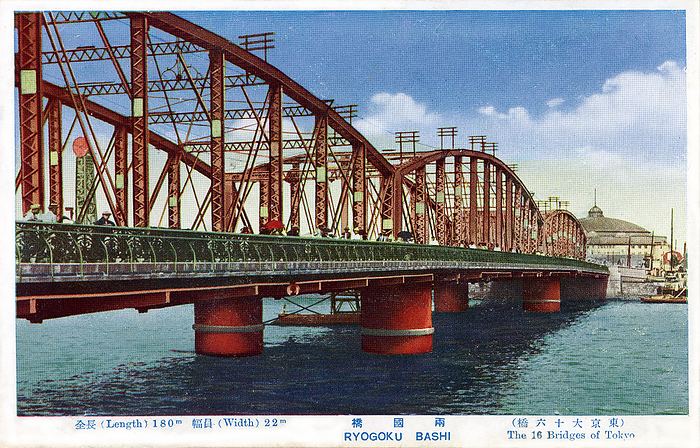
ED
160306-0034 - Ryogokubashi Bridge
The 1904 Ryogokubashi Bridge spanning the Sumidagawa River in Tokyo, ca. 1930 (Showa 5).
In the back the Kokugikan, also known as Sumo Hall, can be seen.
Construction of the first Ryogokubashi was started in 1659 (Manji 2). The bridge's name means "two provinces" as it connected the provinces of Shimosa and Musashi.
On August 10th, 1897 (Meiji 30) a 10 meter stretch of guardrail of the last wooden wooden Ryogokubashi collapsed when a crowd was watching the famous Sumida river fireworks. More than ten people died.
As a result, a steel bridge was constructed 20 meters downstream from the wooden bridge in 1904 (Meiji 37).
This steel bridge was so strong that it survived the devastation of the Great Kanto Earthquake of September 1, 1923 (Taisho 12). Nonetheless, it was replaced with the current bridge shortly after the earthquake.
From the postcard series The 16 Bridges of Tokyo.
As part of the project, hundreds of bridges were built or reconstructed. As part of the project, hundreds of bridges were built or reconstructed.
This series appears to have been published to coincide with the celebration.
Photo by MeijiShowa/AFLO
Details
ID
125405864
Collection
License type
Editorial
Photographer
Creation date
16-04-2020
Contact Aflo for all commercial uses.

More
Top Categories
